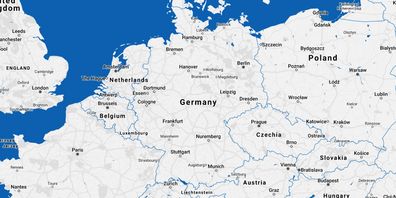Please note that the CHE Ranking is currently being updated. It is therefore possible that the information provided is not up-to-date. On the website of ZEIT ONLINE you can already find the updated ranking, but only in German: https://studiengaenge.zeit.de/ranking.

Physics, Department
Fachbereich Physik
Technische Universität Darmstadt
Hochschulstraße 12
D-64289 Darmstadt
Telephone: +49 6151 16-4072
https://www.tu-darmstadt.de
TU Darmstadt
Department on the internet
Online application
Student body
Degree courses with details

Map material from the free geographic information system OpenStreetMap. The DAAD explicitly does not adopt the information provided there (names, boundaries, etc.) in every case. No guarantee is given for the accuracy of this information.
Legend:
- Department
Basic information
- Total number of students at the department
1,080
- Number of master degree students (w/o teacher qualification)
180
Support during the study entry phase
- Total score for support in the study entry phase
10/14 points
International orientation
- Share of anglophone research groups
25.0%
Research
Research profile (distribution of PhD theses)
- Optical, Quantum Optical, Atomic, Molecular and Plasma Physics: 19.5%
- Surface Physics and Nanostructures: 0%
- Solid-state and Materials Physics: 0%
- Particle Physics: 43.1%
- Astrophysics and Astronomy: 13.8%
- Soft matter physics, Biological and Chemical Physics, interdisciplinary works: 23.6%
Students' assessments on undergraduate, presence-learning-courses
- Teacher support
- Support in studies
- Courses offered
- Study organisation
- Exam organisation
- Laboratory internships
- Research orientation
- Support for stays abroad
- Rooms
- Library
- IT-infrastructure
- Student Workstations
- Overall study situation
- Return rate of the questionnaires
55
Students' assessments on consecutive master's degree courses
- Teacher support
- Support in studies
- Courses offered
- Study organisation
- Transition to Master's studies
- Research orientation
- Overall study situation
- Return rate of the questionnaires
no data
Further information provided by the department
Special features regarding teaching
Exchange universities for stay abroads
Special features regarding the equipment
Special features regarding research activities
Further information on research activities
Legend
Groups
green
yellow
blue
Acronyms
(S) = Students' judgements
(F) = Facts
(P) = Professors' judgements
Units
Value in percent
Value in points
Euro
Thousand Euro